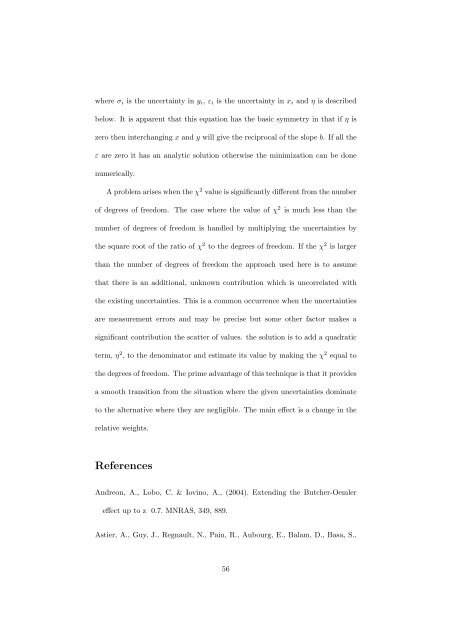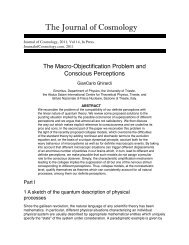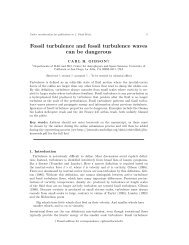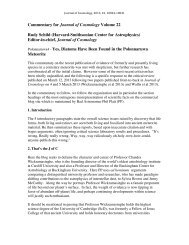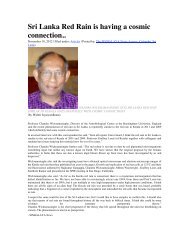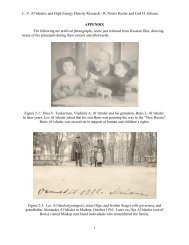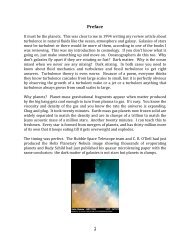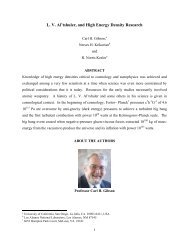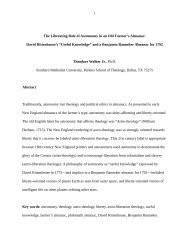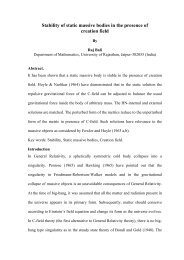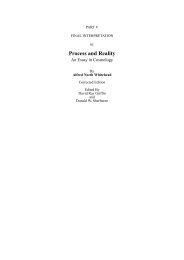Observational Evidence Favors a Static Universe - Journal of ...
Observational Evidence Favors a Static Universe - Journal of ...
Observational Evidence Favors a Static Universe - Journal of ...
Create successful ePaper yourself
Turn your PDF publications into a flip-book with our unique Google optimized e-Paper software.
where σi is the uncertainty in yi, εi is the uncertainty in xi and η is described<br />
below. It is apparent that this equation has the basic symmetry in that if η is<br />
zero then interchanging x and y will give the reciprocal <strong>of</strong> the slope b. If all the<br />
ε are zero it has an analytic solution otherwise the minimization can be done<br />
numerically.<br />
A problem arises when the χ 2 value is significantly different from the number<br />
<strong>of</strong> degrees <strong>of</strong> freedom. The case where the value <strong>of</strong> χ 2 is much less than the<br />
number <strong>of</strong> degrees <strong>of</strong> freedom is handled by multiplying the uncertainties by<br />
the square root <strong>of</strong> the ratio <strong>of</strong> χ 2 to the degrees <strong>of</strong> freedom. If the χ 2 is larger<br />
than the number <strong>of</strong> degrees <strong>of</strong> freedom the approach used here is to assume<br />
that there is an additional, unknown contribution which is uncorrelated with<br />
the existing uncertainties. This is a common occurrence when the uncertainties<br />
are measurement errors and may be precise but some other factor makes a<br />
significant contribution the scatter <strong>of</strong> values. the solution is to add a quadratic<br />
term, η 2 , to the denominator and estimate its value by making the χ 2 equal to<br />
the degrees <strong>of</strong> freedom. The prime advantage <strong>of</strong> this technique is that it provides<br />
a smooth transition from the situation where the given uncertainties dominate<br />
to the alternative where they are negligible. The main effect is a change in the<br />
relative weights.<br />
References<br />
Andreon, A., Lobo, C. & Iovino, A., (2004). Extending the Butcher-Oemler<br />
effect up to z 0.7. MNRAS, 349, 889.<br />
Astier, A., Guy, J., Regnault, N., Pain, R., Aubourg, E., Balam, D., Basa, S.,<br />
56


